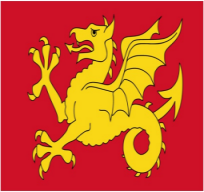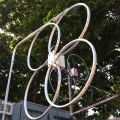G8JNJ
About
- Username
- G8JNJ
- Joined
- Visits
- 4,662
- Last Active
- Roles
- Member
- Points
- 130
Reactions
-
Ionosonde
I had previously exchanged emails with Peter Martinez, G3PLX, on this subject, here are some more notes on the subject.
http://jcoppens.com/radio/prop/g3plx/index.en.php
I think it would be possible to use a KiWi to track the Ionosounders, the two sweeps (approx 5 seconds apart) from Cyprus are very strong in Europe and can be seen on most of the KiWi's in that continent.
There are several operating with known characteristics start time, start frequency, sweep rate etc. so writing a script to tune the KiWi ahead of the sweep and then recording the signal as it passes through the RX passband and time stamping it, then processing captured samples off-line to correct the frequency shift as the signal sweeps through the RX channel and 'stitch' the individually recorded samples back together may be possible. It may be that two or more RX channels would be required in order to ensure a frequency 'overlap' of recordings.
But I'm not a software guy either :-(
however I used to work with them, and they always told me that any problem 'could be fixed in the code' :-)
Regards,
Martin - G8JNJ -
OpenWebRX [using a transverter/down-converter with the Kiwi]
-
Marking a Station
-
Marking a Station
-
New User - thoughts / issues
@Lonecrow
"Presets - I really like to flip around known channels / favorites but it is a manual process. I know you can do last/previous with the arrow keys but I'd like some form of bookmark/favorites extension. A simple list on the left hand side would suffice with maybe folders/sub folders! "
Although it's not quite what you had in mind, you can get close by bookmarking URL strings.
If you use the green arrow button next to the frequency input text box, it opens up a new browser session with a URL string including the current frequency and mode etc. This can then be saved as a browser bookmark and renamed as required.
I also do this for TDoA sessions and save them with names such as UK, Europe, North America, Russia, China etc.
That way I can quickly recall some standard setups with KiWi's that I know work well for the named coverage area, then I normally only have to recall the bookmark, change the frequency and hit submit.
It saves a lot of time if you ever need to quickly locate a transmission.
Regards,
Martin - G8JNJ






